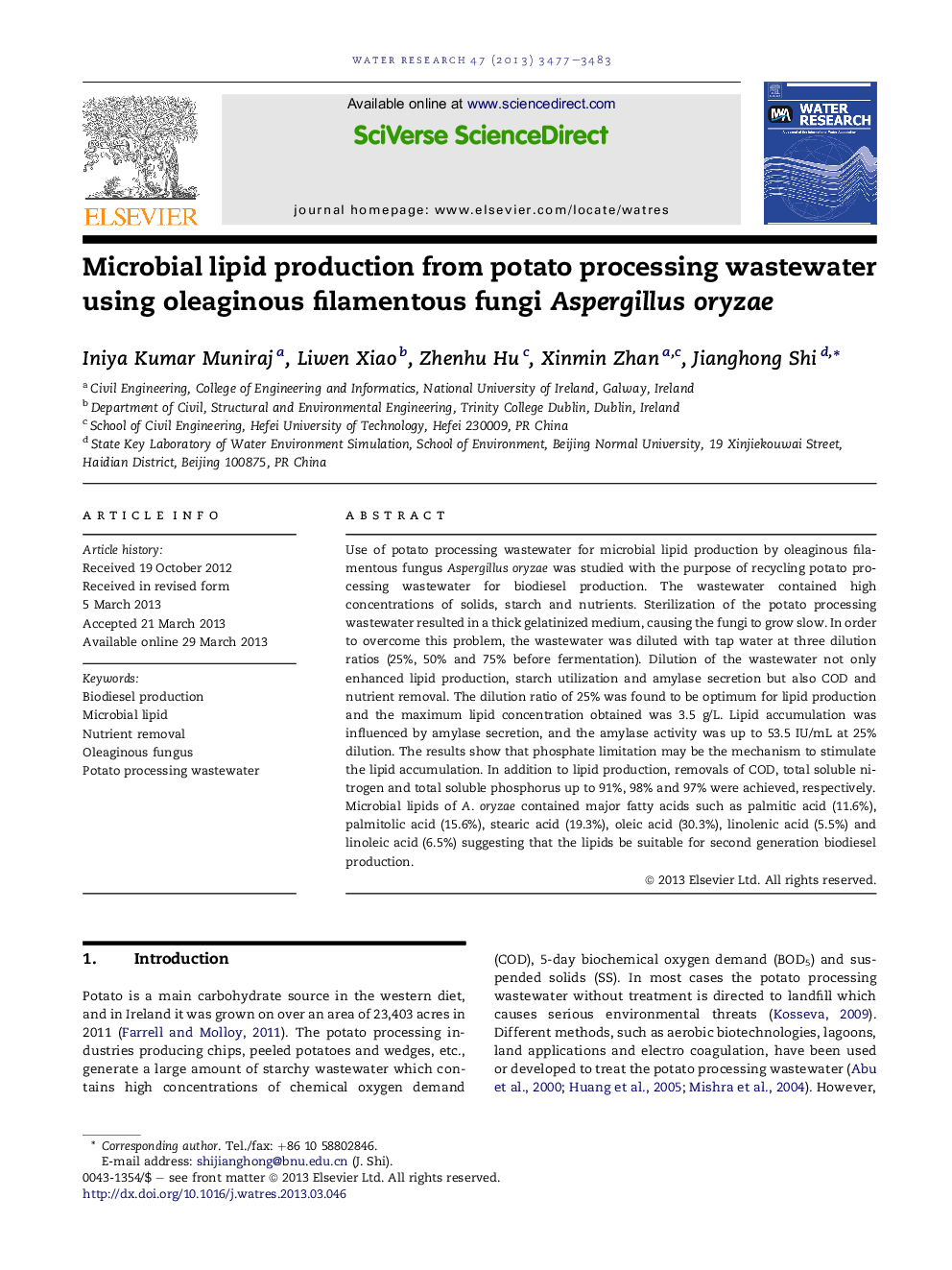| کد مقاله | کد نشریه | سال انتشار | مقاله انگلیسی | نسخه تمام متن |
|---|---|---|---|---|
| 4481811 | 1316834 | 2013 | 7 صفحه PDF | دانلود رایگان |

• It is the first time to recover microbial oils from potato processing wastewater.
• The microbial lipid yield was up to 3.5 g/L potato processing wastewater.
• The microbial lipid produced was suitable for biodiesel production.
• Efficient removals of COD and nutrients from wastewater were achieved.
Use of potato processing wastewater for microbial lipid production by oleaginous filamentous fungus Aspergillus oryzae was studied with the purpose of recycling potato processing wastewater for biodiesel production. The wastewater contained high concentrations of solids, starch and nutrients. Sterilization of the potato processing wastewater resulted in a thick gelatinized medium, causing the fungi to grow slow. In order to overcome this problem, the wastewater was diluted with tap water at three dilution ratios (25%, 50% and 75% before fermentation). Dilution of the wastewater not only enhanced lipid production, starch utilization and amylase secretion but also COD and nutrient removal. The dilution ratio of 25% was found to be optimum for lipid production and the maximum lipid concentration obtained was 3.5 g/L. Lipid accumulation was influenced by amylase secretion, and the amylase activity was up to 53.5 IU/mL at 25% dilution. The results show that phosphate limitation may be the mechanism to stimulate the lipid accumulation. In addition to lipid production, removals of COD, total soluble nitrogen and total soluble phosphorus up to 91%, 98% and 97% were achieved, respectively. Microbial lipids of A. oryzae contained major fatty acids such as palmitic acid (11.6%), palmitolic acid (15.6%), stearic acid (19.3%), oleic acid (30.3%), linolenic acid (5.5%) and linoleic acid (6.5%) suggesting that the lipids be suitable for second generation biodiesel production.
Figure optionsDownload high-quality image (119 K)Download as PowerPoint slide
Journal: Water Research - Volume 47, Issue 10, 15 June 2013, Pages 3477–3483